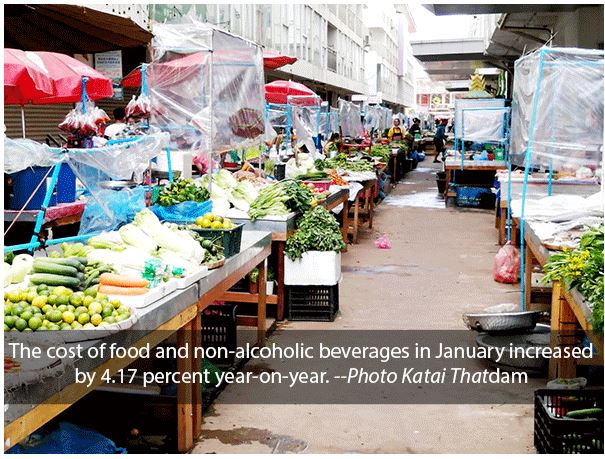Laos: Inflation hits highest point in two years
The year-on-year inflation rate jumped to 6.25 percent in January, the highest figure recorded since January 2020, inflicting another blow on Lao people’s wallets.
The cost of goods and services has continued to climb since March last year and jumped to 5.04 percent in November before rising to 5.27 percent in December, according to the latest report from the Lao Statistics Bureau.
The rising cost of fuel is one of the main drivers of inflation in Laos. The Covid-19 pandemic, especially the emergence of the Omicron variant, and the volatile fuel market has had huge consequences on the inflation rate in countries around the world, including Laos.
The pandemic continues to interrupt global supply chains, leading to shortages and driving up the price of goods due to a mismatch in demand and supply.
In addition, the rising price of gold and steady depreciation of the kip are making it even harder to curb inflation in Laos.
In January, the cost of goods and services was mainly driven by the communications and transport category, medical care and medicine, restaurant and hotel, and the goods and services categories.
Costs in the communications and transport category rose by 1.26 percent month-on-month, and 13.72 percent year-on-year.
The surge in this category is linked to the price of oil and gas which rose by 29.53 percent year-on-year in January, affecting the cost of transport and the price of goods on sale in local markets.
Since the start of this year, fuel prices have risen four times, hammering Lao consumers and their efforts to improve their living standards.
Meanwhile, the price of medical care and medicines rose by 0.9 percent month-on-month and 9.05 percent year-on-year.
Prices in the restaurant and hotel category surged by 0.55 percent month-on-month and 8.59 percent year-on-year.
According to the Lao Statistics Bureau, the internal factors driving the cost of goods and services was linked to rising demand in the food and non-alcoholic beverages category during the Chinese and Vietnamese New Year.
The cost of food and non-alcoholic beverages in January increased by 0.66 percent month-on-month and 4.17 percent year-on-year, with the price of pork and poultry rising significantly.
Some countries have raised interest rates to increase the cost of borrowing as a means of curbing inflation.
In Laos, the government is taking steps to boost productivity in order to reduce imports, and to control the rising price of fuel to ease the impact on the economy and the general public. The government has decided to cut Value Added Tax from 10 to 7 percent this year and cut all fuel reserves, meaning that the current oil reserve price is now 0 kip/litre.
Source: https://www.vientianetimes.org.la/freeContent/FreeConten_Inflation_37_22.php


 English
English




